First impressions
The island of Okinawa is filled with natural beauty. The sun is warm. The foliage is dense, green, and lush. There are succulent-like plants growing from the rocky and sandy shorelines. Hibiscus and bougainvillea generously flower. Leafy low trees, banyans, and pine trees hide noisy birds. Birding has been tricky as we hear many birds in the trees and bushes, but then see very few. The birds are also noticeably skittish. I suspect this is related to the abundance of wild cats on the island that have maybe eaten all the social and complacent birds. And when the cats don’t eat them, there are the raptors to watch out for. We’ve seen a number of osprey and hawks.
Okinawa is one of a few islands that constitute the Okinawa Prefecture, similar to a state in the US. We are staying in the main island called Okinawa. This was the island where my mother grew up. So many of her childhood stories revolve around the presence of American GI during that period of post-WWII in Japan. Her school was given hard blocks cheese to eat for calcium by the army. My mom began to learn English by listening to American radio. She hung around an American cultural exchange center to practice her English with American Airlines stewardesses. Back then American Airlines had direct flights to Okinawa from the US. The American military compound seemed to be very much a part of every Okinawan’s geographic and social orientation of daily life.
Because of my mom’s stories I developed an impression of what Okinawa might have been like with the American military so centered in daily life. I also knew some of the general history of Okinawa in terms of the destruction from and aftermath of WWII on the island. I use the word “destruction” to refer to many kinds of harm and damage. So in coming to Okinawa, Raghav and I both imagined an island that perhaps was obviously jarred or tense, maybe an undercurrent of exploitation. It is also an island with an economy that to some degree relies on tourism. And I have an image of the challenges of being born to a tropical island that relies on tourism income.
So it was to our surprise that we found easy and comfortable living, the tension not really there. People moving through life like anywhere. Parts of the island are provincial and rural and intimate with people who are doing fine. Other parts have a bit more built up, large park areas, beaches to swim, and extracurriculars that residents participate in. The infrastructure is good. The economy does not seem to painfully rely on tourists’ spending. In hindsight we were presumptuous to think that a community does not find ways to move on, dig into resilience, adapt to events that honestly seem “unadaptable” or even unbearable, and find a way to sustain and protect a specific kind of community culture and way of life.
Granted we’ve only seen the surface and in a very short period of time. Also, we have not spent time around the military base nor in the capital, Naha, where we hear that GI go out for entertainment and social life.
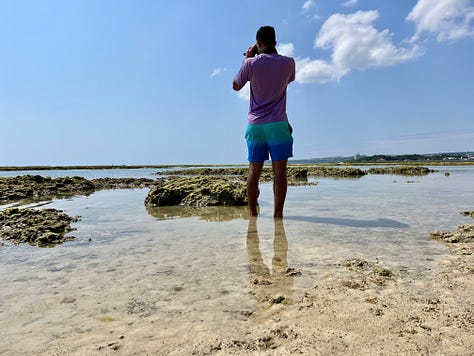
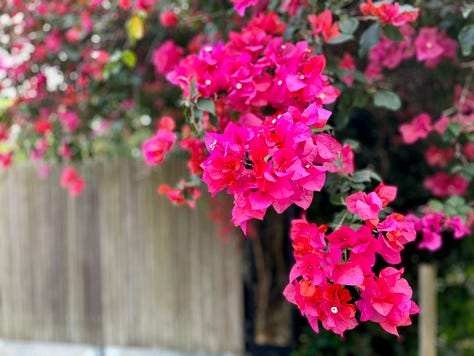
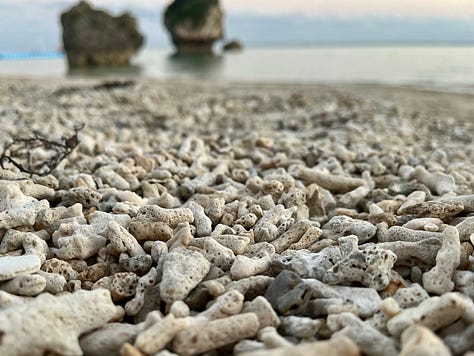
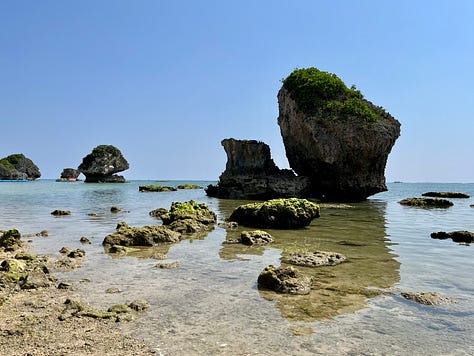
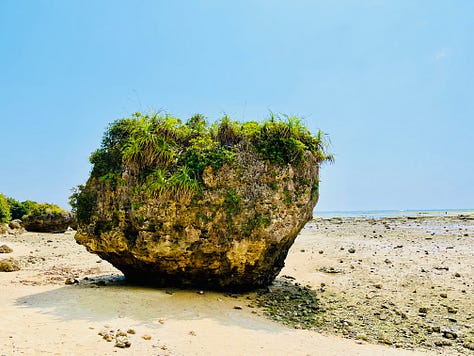
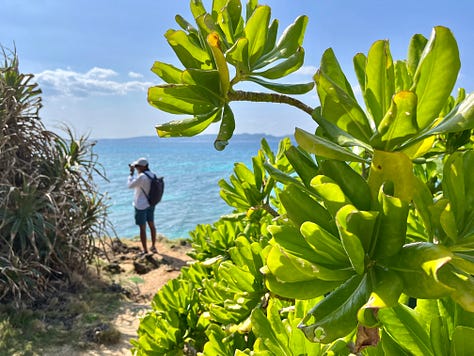
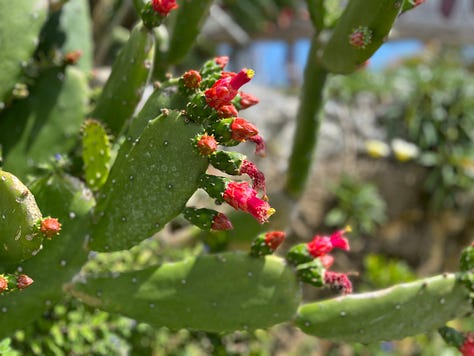
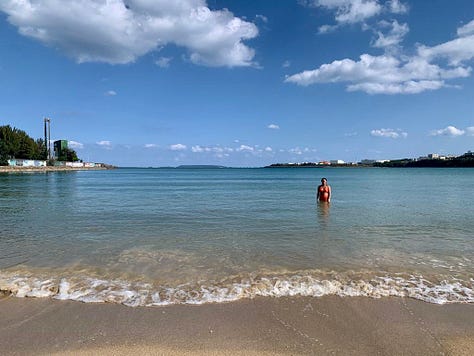
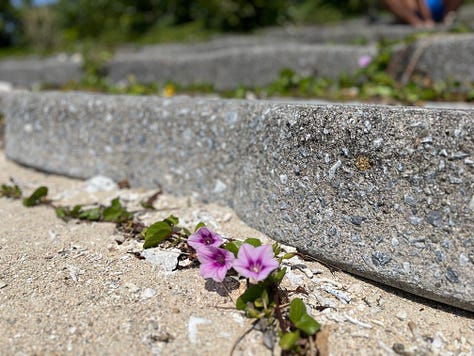
My mom’s hometown of Ishikawa
My mom grew up in Ishikawa, which is a city on the northern side of the central area of the island. It is along the Eastern coast. We rented a car in Okinawa, so we were able to plan a day trip where we’d drive up there. You need car if you want to go any kind of distance with ease. Okinawa does not have the public transportation infrastructure that the mainland does. Prior to going, Raghav pressed my mom for landmarks of Ishikawa that she remembered from her childhood so that we could visit those places. My mom had a difficult time with that. She said it was hard to remember. She is now 67 years old and left Okinawa when she was in her early 20’s. Also she reiterated the sentiment that ‘nothing is the same.’
My mom eventually shared that there was a public library where she spent a lot of time as a pre-teen and adolescent. We located the library on Google Maps and decided to visit it. When we entered Ishikawa, it was a bustling, smaller-sized city with a lot of new construction and also construction from the last 20-30 years. It was much different than the quiet energy of our stay in Nanjō at the southern tip of the island.
We stopped at a park area along the coast and took a walk. We imagined my mom possibly swimming along the beach areas or at least moving through this space over 50 years ago as a kid. We eventually made our way to the library that my mom identified. Raghav whimsically said, “Maybe she’ll recognize it,” and snapped a photo with me in front of it to send to her. I thought the opposite, that this construction was recent and there was no way she spent time in this exact building.
Raghav then entered the library where he stumbled upon an exhibit that included the photos below of the city of Ishikawa in the years following the war. Comparing it to the photo of me in front of the library, it just felt like worlds apart. I literally saw then the extent of the changes and “modernizing” that this place had undergone over the last fifty years. I felt a pang that, as my mom tried to explain, there is actually no landmark truly familiar to her, something actually there when she was as a child.
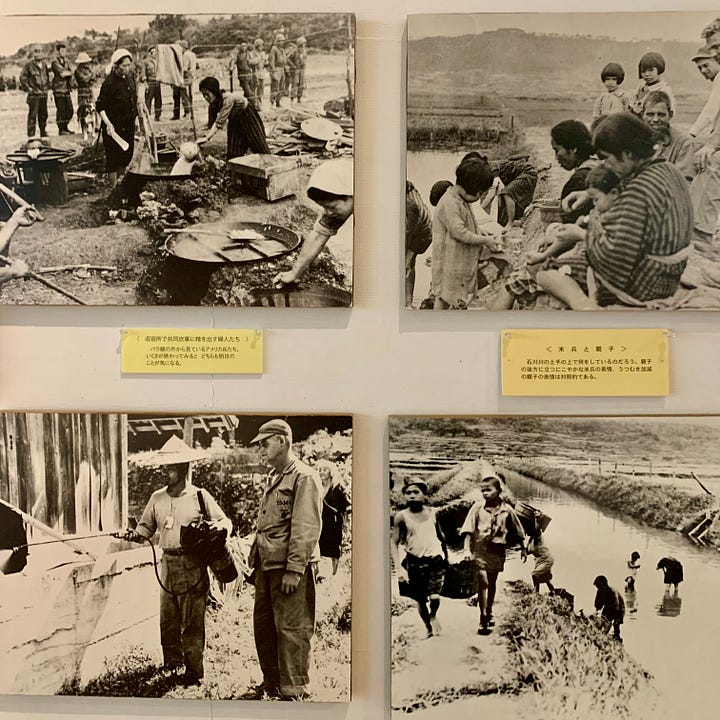
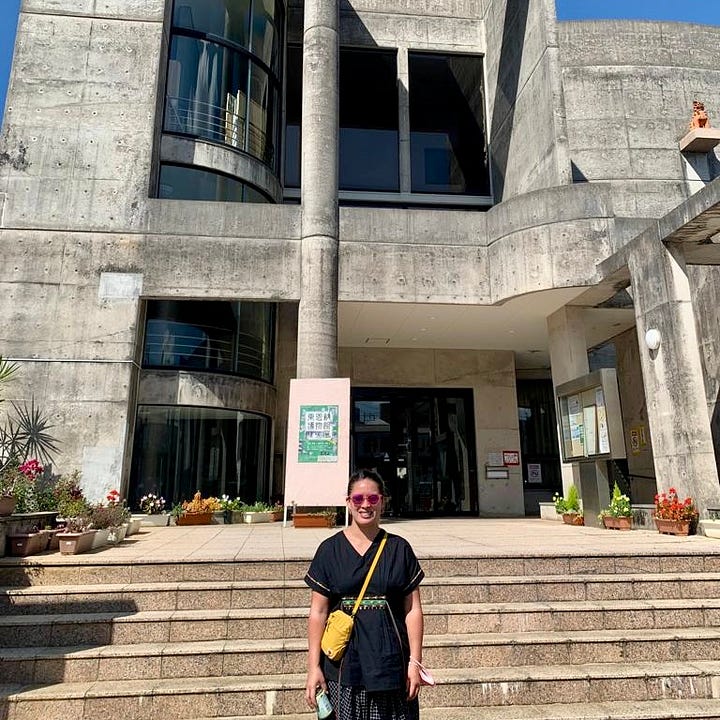
Okinawa, a “blue zone” region
Okinawa is known to be a “blue zone” in the world, meaning it is a region where people live longer than average. The longevity is partly attributed to the highly nutritious seaweed or brown algae, mozuku, that is consumed as part of a regular diet. It has a few extraordinary properties, such as molecules that are tumor-suppressants. We observed the popularity of mozuku through our time at a local soba restaurant and in grocery stores. In the photo below of our soba lunch set, two-thirds of the little dishes are predominately mozuku and the remaining dishes include mozuku or another kind of seaweed as an ingredient.
In grocery stores, there were numerous preparations of mozuku in various kinds of packaging and serving sizes. Mozuku itself doesn’t have strong flavor, depending more on the seasoning for that. It has a viscous kind of liquid that coats it. It is shaped like and has a similar texture to short vermicelli noodles.
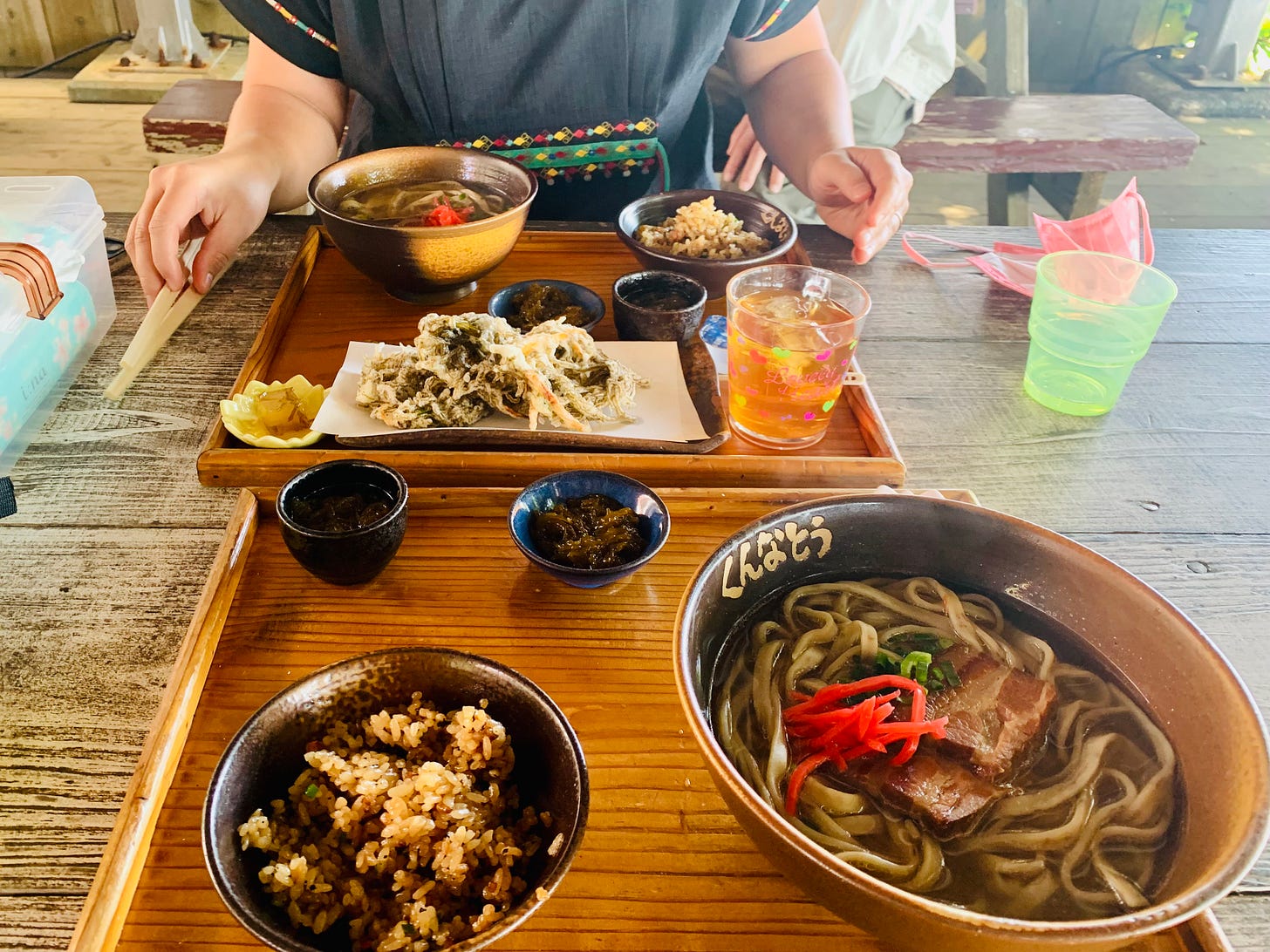
I believe another factor to the longevity of the Okinawan people is related to the ease they embody in their lifestyle. Being here has a very different quality than mainland Japan. The unspoken rules and norms are much fewer. People are less monitoring and noticing of you, even when they see you’re not Japanese, so fewer side-gazes. People move around more freely. Their dress is not so exact and tidy, it is more casual. Children walk around looking like they’ve been out and playing around, rather than having every hair right in place. At the same time, it still very much has the Japanese cultural characteristics of orderliness, respect and courtesy, conscientiousness of others, and of course the easy and affordable access to delicious foods.
We return to the Japan’s mainland tomorrow. I am going to try and bring a little of this energy back with me, to try and be less overly concerned with always doing everything “the right way [by Japanese standards].”



I loved this update! So fascinating and reflective. What a beautiful place.
This sounds extraordinary, Tatum. How incredibly special to be there in Ishikawa and imagining your mom's childhood. I found myself really wanting the library to be your mom's library! I hear both - the losses and the resilience of Ishikawa, and Okinawa as a whole.
- Such lovely history and reflection on your part. Thank you for sharing such a sacred visit with us!